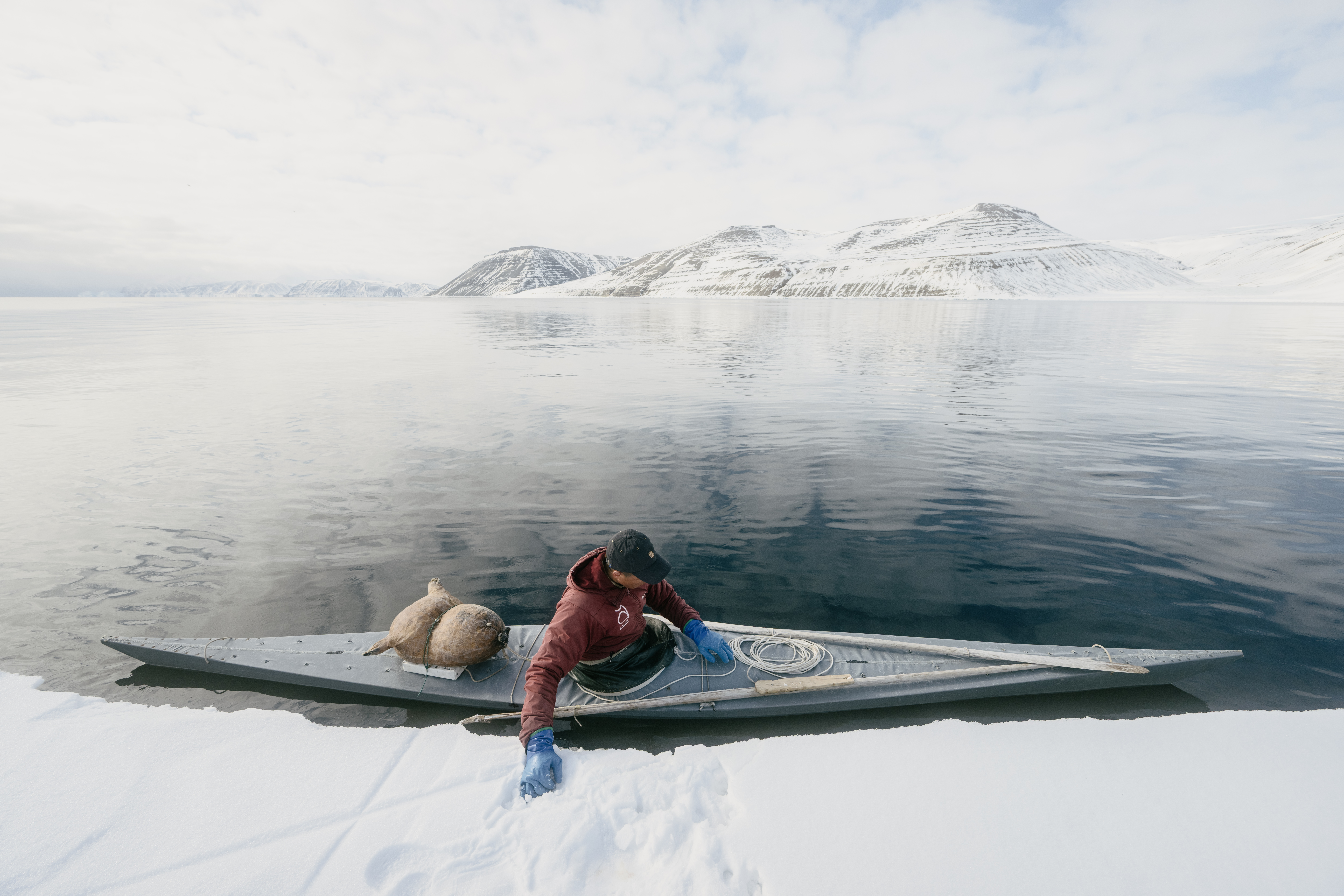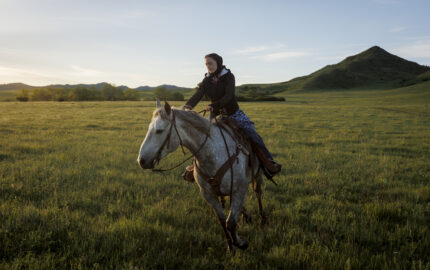This photograph happened while I was working on a story on Indigenous conservation in North Greenland. Qillaq Kristiansen is a narwhal hunter, one of the best in the community. To manage the narwhal population in a community that also subsists on them, he practices both cultural and ecological conservation by using the traditional methods of hunting by kayak and hand-thrown harpoons.
I was out on the sea ice with Qillaq on the two days all spring when the sea ice conditions were favorable for narwhal hunting. He waited patiently for the right opportunity to approach it by kayak — a difficult and risky way to hunt that requires tremendous ecological knowledge, the kind that has been passed down for centuries.
I met Qillaq in 2023 while living in Qaanaaq on assignment for National Geographic magazine. The hunters all knew I had come back for a second year to try to photograph the narwhal hunt; in an unprecedented turn of events, it had been canceled my first spring in Qaanaaq due to the changing climate. Qillaq stopped in to invite me along, since he and his father were heading out onto the sea ice the next morning.
I talked to Qillaq a lot about the Inughuit — an ethnic subgroup of the Inuit of northwestern Greenland — and their notions of conservation, or stewardship. He told me, "We live together with the animals we hunt,” and said he believed biologists need to learn from the hunters who are out on the land daily. Inughuit management practices work — conservation organizations consider narwhals and seals in Inughuit territory to have healthy, stable populations.
At sea, Qillaq was in his zone. While he might seem to be quietly waiting and not paying attention, he was intently tuned in to the environment around him, listening for signs of narwhals, and also seals and murres that might give him clues to the narwhals’ positions.
Meanwhile, on the sea ice, Qillaq’s dog team relaxed and soaked up the sun. The world was extremely quiet and starkly beautiful.
As a documentary photographer, I am as much a journalist as an artist. Whenever I am working on a project, I am led by my curiosity and passion for the cultural insights that Indigenous peoples have evolved over millennia. For me, living with a community over many months or years helps me understand and learn to see the world in ways that I could not have imagined before, which gives me inspiration for photography. Sometimes it’s literal, as in documentary photography for National Geographic, but sometimes it’s more lyrical and finds its way into fine art perspectives — like museum exhibitions — or my upcoming book, “Guardians of Life.”



